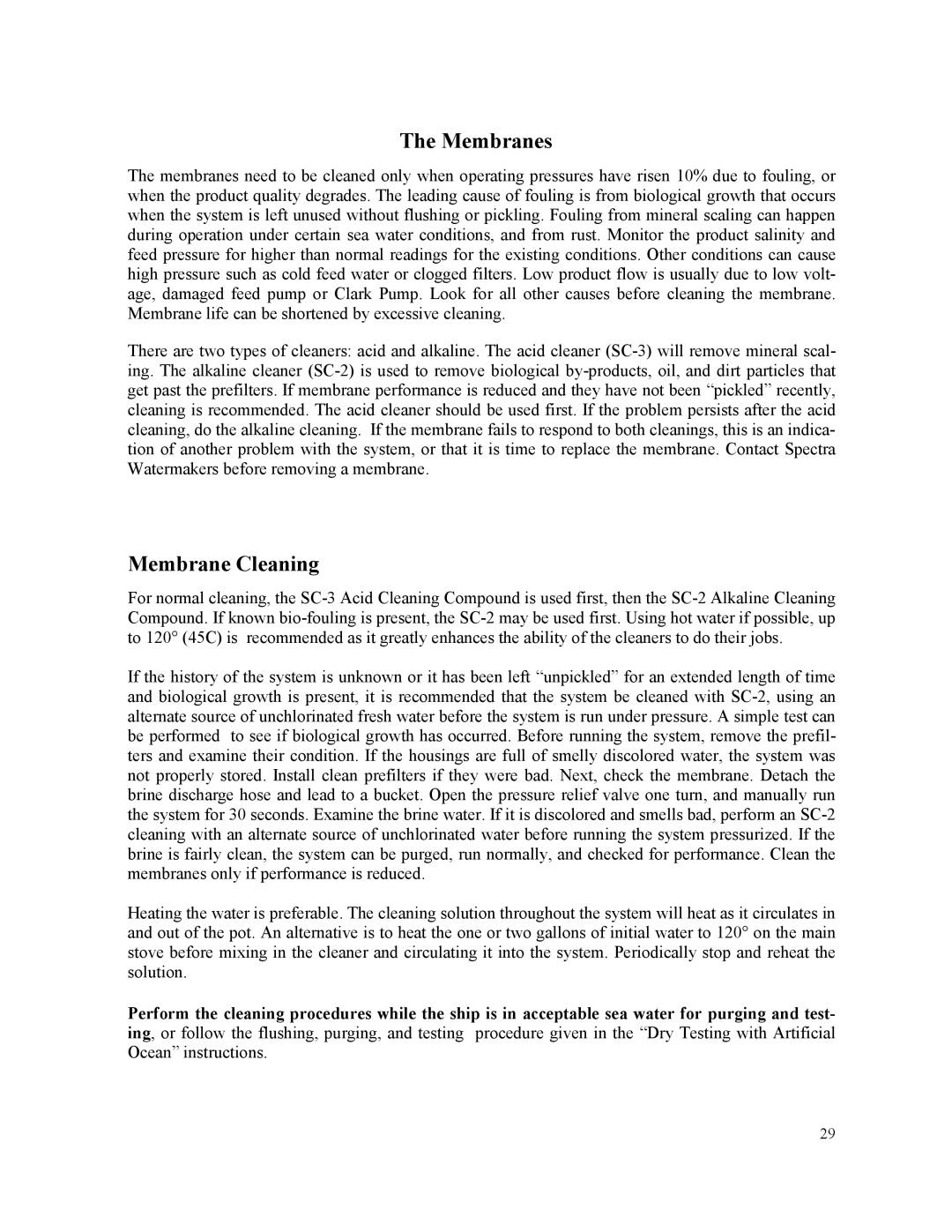MPC-5000 specifications
The Spectra Watermakers MPC-5000 is a highly efficient water desalination system designed for a variety of applications, including marine, off-grid, and emergency situations. Known for its reliability and innovative technology, the MPC-5000 stands out as one of the leading solutions for producing fresh water from saltwater.One of the main features of the MPC-5000 is its impressive production capacity. Capable of producing up to 5,000 gallons of fresh water per day, this system is well-suited for larger vessels or facilities with significant water needs. This robust output makes it an ideal choice for yachts, research vessels, and even small communities in remote areas.
The MPC-5000 utilizes advanced reverse osmosis technology, a process that efficiently separates salt and impurities from seawater. This technique not only ensures high-quality drinking water but also operates at lower energy consumption compared to traditional desalination methods. By employing a state-of-the-art energy recovery device, the MPC-5000 maximizes energy efficiency, significantly reducing operational costs and environmental impact.
In terms of build quality, the MPC-5000 is constructed with marine-grade materials to withstand harsh conditions, making it durable and reliable for long-term use. Its compact design allows easy installation on various platforms, and the system can be operated either through AC or DC power sources, providing flexibility for diverse applications.
The onboard controls of the MPC-5000 are user-friendly, featuring a digital display that provides real-time data on system performance, water production rates, and maintenance alerts. This intuitive interface simplifies operation and monitoring, ensuring users can quickly identify and address any issues.
Another noteworthy characteristic is its low maintenance requirement. The MPC-5000 is designed for easy serviceability, allowing users to conduct routine maintenance with minimal downtime. The integrated filtration system and user-replaceable membrane further enhance its appeal, offering convenience without sacrificing performance.
In conclusion, the Spectra Watermakers MPC-5000 is a standout solution in the water desalination market. With its impressive production capacity, advanced technology, durable construction, and user-friendly design, it meets the water needs of various users while ensuring efficient and reliable operation. Whether for marine use, emergencies, or off-grid living, the MPC-5000 represents a smart investment in sustainable water sourcing.
